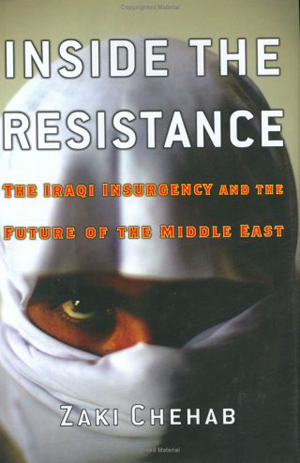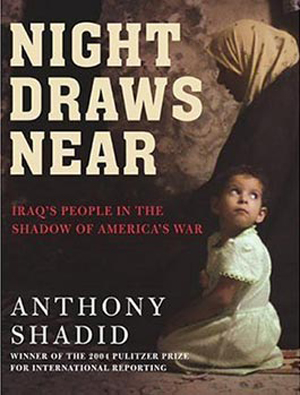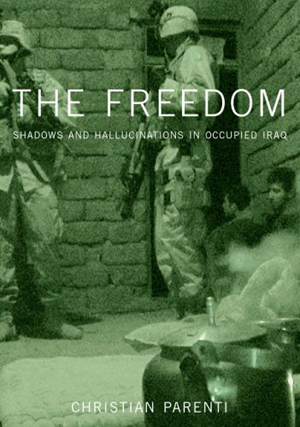I just finished reading a US news account of the third day of former Iraqi ruler Saddam Hussein’s trial in Baghdad. Like almost every bit of news coming out of Iraq, this account showed the prejudices of the reporters and editors of the periodical that it appeared in. In this instance, that meant that Saddam and his co-defendant were portrayed as a bit insane and that their lawyers’ objections to the trial’s fairness were out of line and trivial. Of course, if it were a former US leader in the docket who was accused of crimes similar to those Mr. Hussein is accused of (say Robert McNamara or Henry Kissinger), one can be certain that their lawyers would raise comparable objections. After all, the court Mr. Hussein is being tried in is not exactly a court without an agenda. If the trial were taking place in an international war crimes court, at least the trial would have the appearance of fairness.
The reality of Iraq is well known but worth repeating: the war was started on lies and half-truths and it continues to be waged on newer lies and half-truths. Saddam’s government withheld truths from the Iraqi people during his rule and led them into a series of wars that they could never win. The US government and its accomplices in the West withheld truths from their respective publics and led them into a series of wars that they can never win. The result is the unnecessary deaths of hundreds of thousands of Iraqis from war, sanctions, the brutality of Saddam’s security forces, and an increasing number of deaths and injuries to soldiers from the US and its cohorts in occupation.
 INSIDE THE RESISTANCE: The Iraqi Insurgency and the Future of the Middle East by Zaki Chehab BUY THIS BOOK
|
Given this pyramid of lies and half-truths that abound around Iraq and the US/UK occupation, it is refreshing when a report comes along that provides the public with some truths. The recent publication of professional journalist Zaki Chehab‘s Inside the Resistance: The Iraqi Insurgency and the Future of the Middle East by NationBooks is but the most example. With Anthony Shadid’s late summer 2005 release Night Draws Near: Iraq’s People in the Shadow of America’s War and Christian Parenti’s late 2004 book The Freedom: Shadows and Hallucinations in Occupied Iraq, it makes an unintentional trilogy.
Most important in terms of objectivity is the fact that all three of these reporters were able to interview Iraqis who have no investment in the occupier’s government and members of the Iraqi resistance. If one reads these three texts in the order that they were published, one can get a bit of a feel for how the resistance has progressed. Parenti’s book, being the earliest, represents the resistance in its natal stages, while Shadid’s and Chehab’s books report on a resistance movement that is not only more developed, but also considerably more integrated into the daily fabric of those Iraqis who are not part of the US-intalled government. In addition, both Shadid and Chehab’s heritage is Arab and seems to therefore provide them with a bit of an advantage in terms of contacts if for no other reason than that they speak Arabic. The various prejudices of the three reporters comes through in their books — Chehab and Shadid often accepting the portrayals of the war provided by the governments in DC and London a bit too easily for this reviewer. To be fair, however, Parenti is a bit too dismissive of these same characterizations in his reportage. What this ultimately means, though, is that these three books represent genuine on-the-ground reporting. This is not material derived from the Iraq War’s “five-o’clock follies,” written and delivered from within the US Embassy/CIA staion in Baghdad’s Green Zone. These books represent the real thing. In other words, they are written by reporters who have gone out into the battle zone to get their story.
If there is a weakness in these books, it is in their discussion of why the US invaded. This is most apparent in Shadid and Chehab’s texts. Both men can only speculate as to the motivations of the various cliques in the Bush administration and the Pentagon, and both depend a little too much on Washington and London’s reasoning. Chehab spends several pages doing exactly this. Since his book is an attempt to place the resistance and its goals within the context of Washington’s plans for the Middle East, he must address those motives. If anything, his chapter on the leadup to the March 2003 invasion of Iraq only proves that there are many missing chapters in this many-factored tale of imperial intrigue. Just like the truth about Washington’s moves and motives during the US adventure in Vietnam continues to be revealed thirty years after the US left that country in defeat, so will the truth about the US involvement in Iraq remain hidden for years to come. In terms of the resistance’s perception of the new Iraqi military, one of Chehab’s most revealing quotes is a remark of a senior member of Al Qaeda in Iraq wherein he equates the US-created force with the South Lebanese Army. If one recalls, this force was created and maintained by Israel and was responsible for many of the abuses against Palestinians and others living in the area. This single quote explains a lot about how the current Iraqi security forces are perceived by many of their countrymen and women.
The best moments in all of these books are the authors’ accounts of meetings they held with various resistance fighters and ordinary Iraqis. Despite the fact that these conversations and their reportage of them and the resistance in general are already somewhat dated given the constantly evolving story on the ground in Iraq, the stories they tell provide a more complex version of events than that provided by the western media. The resistance as portrayed in these books is multidimensional and fluid. Its various factions choose when to cooperate with other elements and when to go it alone, taking into account the facts on the ground and the shared goal of driving the occupiers out of Iraq. Likewise, they provide a more nuanced version of events than the media outlets of the resistance — outlets that tend towards hyperbole in their portrayals of resistance attacks. None of these reporters provides a rosy picture or prognosis for US forces and intentions in the region. Why? Because their reports are attempts to be objective, and the objective truth is that things are not rosy — nor do they look like they will become that way any time soon for Washington or its accomplices.
Ron Jacobs is author of The Way the Wind Blew: A History of the Weather Underground, just republished by Verso. Jacobs’ essay on Big Bill Broonzy is featured in CounterPunch‘s new collection on music, art and sex: Serpents in the Garden. He can be reached at <rjacobs3625@charter.net>.


